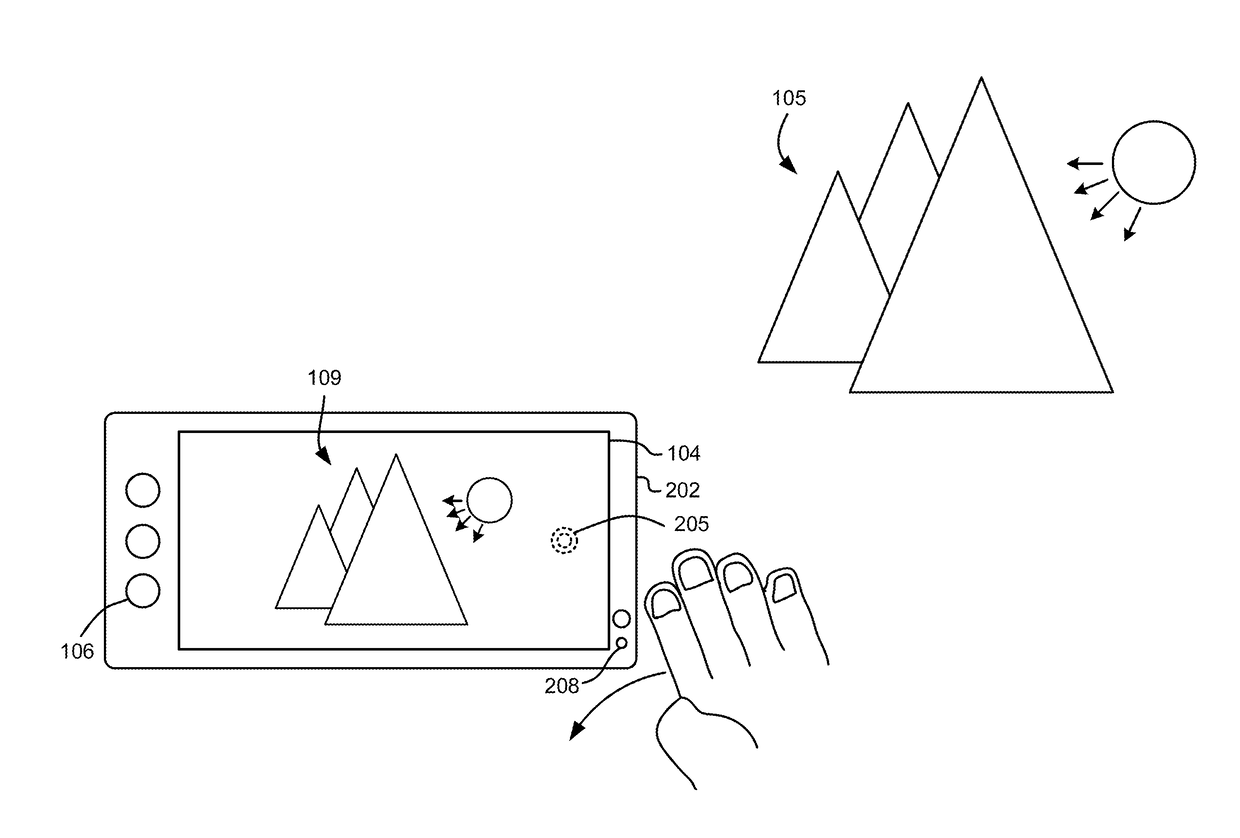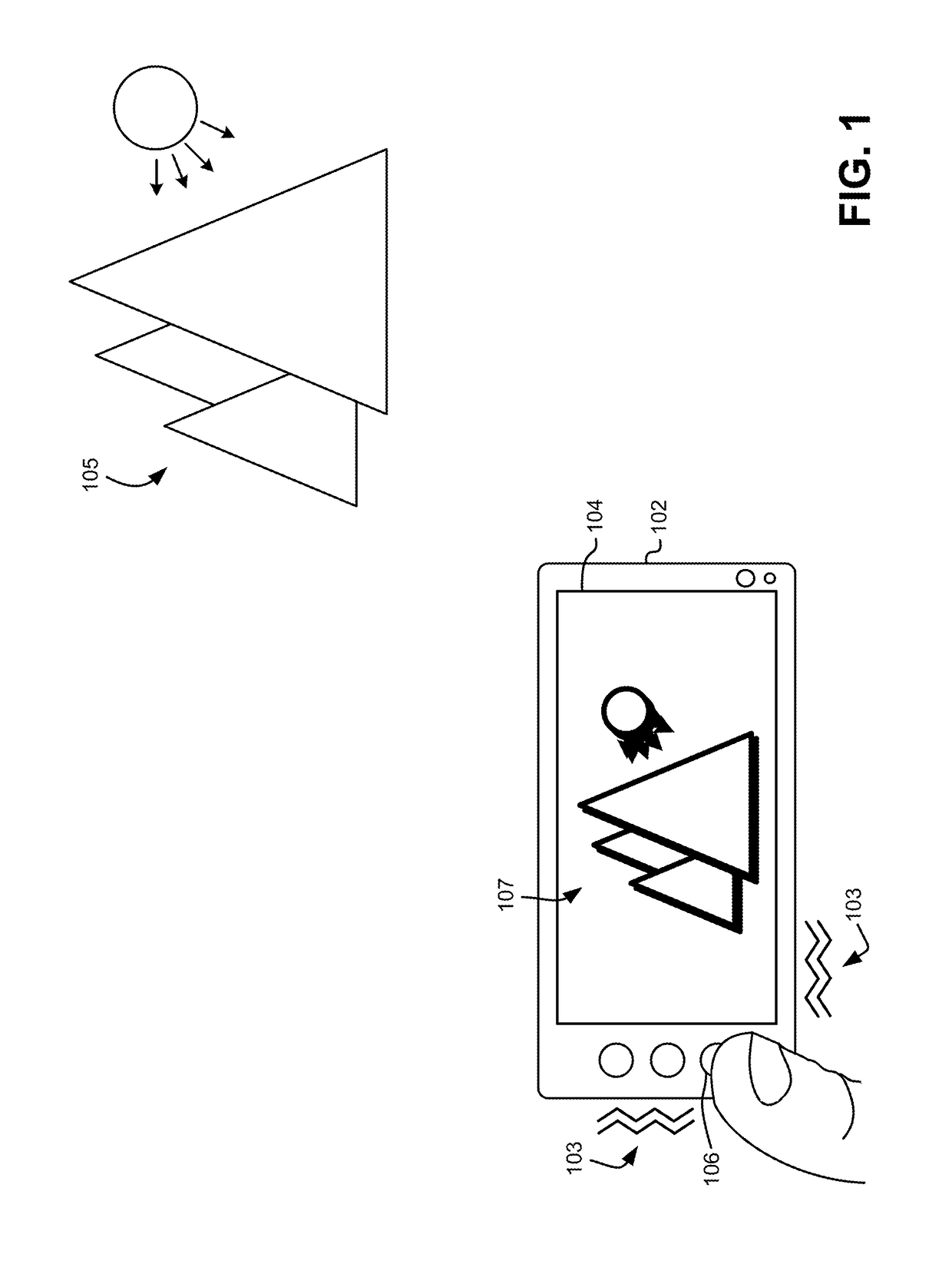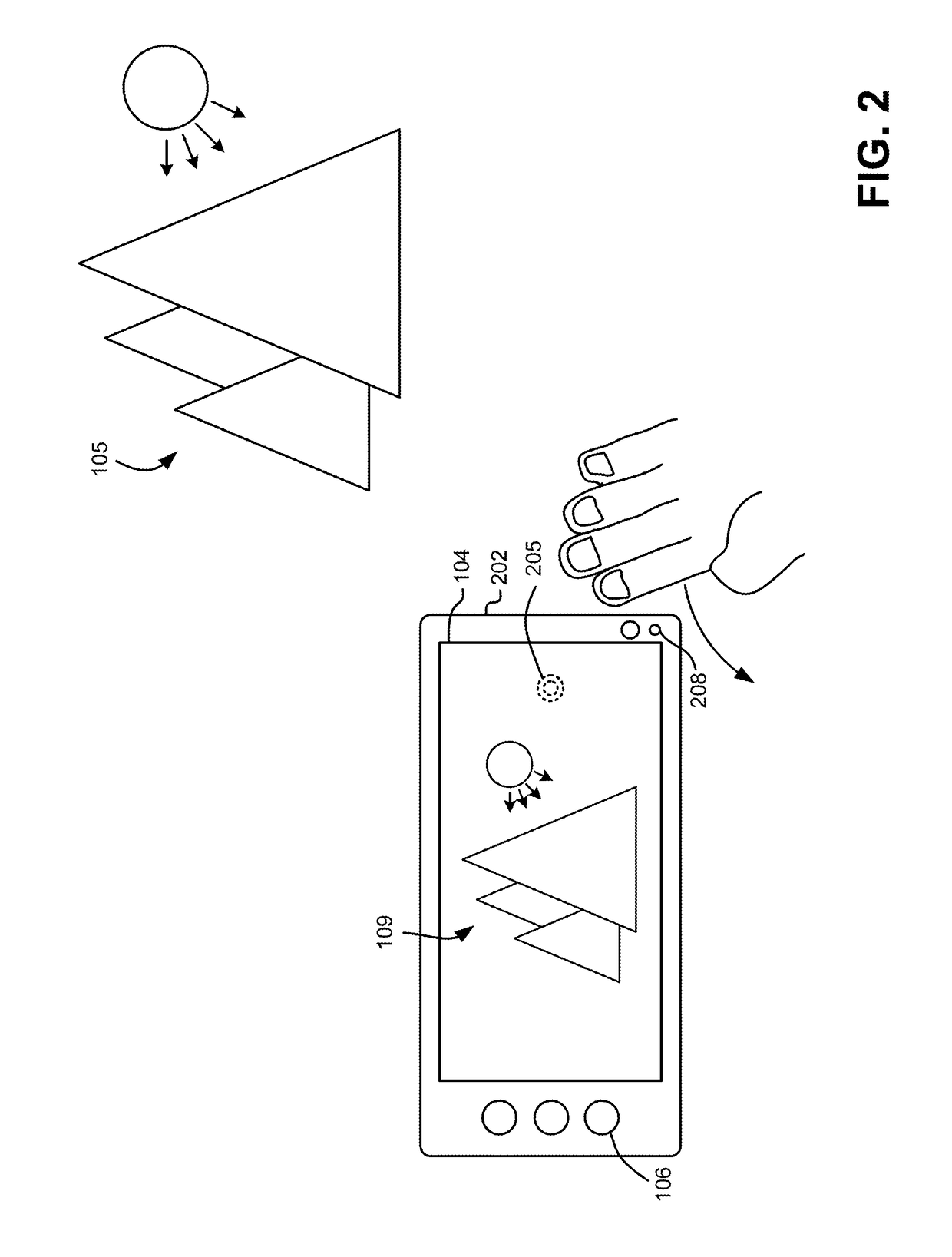Capturing a stable image using an ambient light sensor-based trigger
a technology of ambient light and trigger, which is applied in the field of capture of stable images using ambient light sensor-based triggers, can solve the problems of reducing the available battery power of battery-powered devices, shaking the device, and computational intensive algorithms, and achieves the effect of reducing screen brightness and more suitable or eye-pleasing viewing
- Summary
- Abstract
- Description
- Claims
- Application Information
AI Technical Summary
Benefits of technology
Problems solved by technology
Method used
Image
Examples
Embodiment Construction
[0017]FIG. 2 shows an example of using a device's 202 ambient light sensor 208 for triggering capture of an image. Similar to the device 102 described with reference to FIG. 1, the device 202 includes a screen 104 and a camera 203. The device 202 also includes the ambient light sensor 208. The ambient light sensor 208 as described herein may include any acceptable light sensor, such as a photodiode, and measures illuminance (luminous flux or luminous emittance) in proximity of the ambient light sensor 208. The illuminance is an intensity of light as perceived by the human eye and is measured in units of lux. A lux is one lumen per square meter (m2). Illuminance typically ranges from zero lux to over 100,000 lux. For example, typical office lighting is in the range of 350 to 500 lux, whereas direct sunlight may have an illuminance of 50,000 lux or more.
[0018]Most cameras in use today have a built in ambient light sensor. The ambient light sensor 208 is usually included in the device ...
PUM
 Login to View More
Login to View More Abstract
Description
Claims
Application Information
 Login to View More
Login to View More - R&D
- Intellectual Property
- Life Sciences
- Materials
- Tech Scout
- Unparalleled Data Quality
- Higher Quality Content
- 60% Fewer Hallucinations
Browse by: Latest US Patents, China's latest patents, Technical Efficacy Thesaurus, Application Domain, Technology Topic, Popular Technical Reports.
© 2025 PatSnap. All rights reserved.Legal|Privacy policy|Modern Slavery Act Transparency Statement|Sitemap|About US| Contact US: help@patsnap.com



